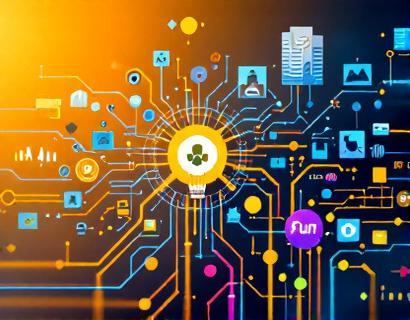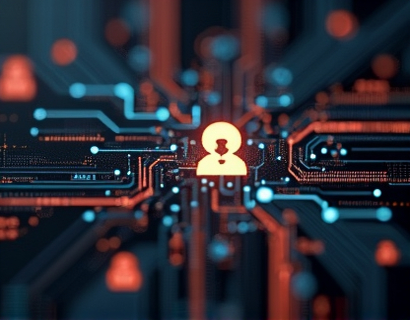Transforming Education with AI-Powered Chatbots: A Comprehensive Guide for Students, Families, and Educators
The integration of artificial intelligence in educational settings has opened new avenues for learning, making knowledge more accessible and personalized than ever before. Among these innovations, AI-powered educational chatbots stand out as a transformative tool, offering specialized insights tailored to the needs of students, families, and educators. This article delves into the capabilities and benefits of these chatbots, focusing on how they provide industry-specific knowledge and services through verified content, ensuring a safe and enriching educational experience for all users.
Understanding AI-Powered Educational Chatbots
AI-powered educational chatbots are sophisticated software applications designed to simulate conversation through natural language processing and machine learning algorithms. These chatbots are programmed to understand and respond to user queries with relevant and accurate information, adapting to the user's level of understanding and learning pace. Unlike traditional Q&A platforms, these chatbots offer a dynamic and interactive learning experience, capable of engaging users in meaningful dialogues that enhance comprehension and retention of complex concepts.
Specialized Insights for Students
For students, AI chatbots serve as personal tutors, providing instant access to specialized knowledge across various subjects and industries. These chatbots can explain intricate topics in simplified terms, making advanced concepts more approachable. For instance, a student studying computer science can ask the chatbot about specific programming languages, subroutine services, or industry trends, and receive detailed explanations along with practical examples. This immediate access to expert-level information helps bridge knowledge gaps and fosters a deeper understanding of the subject matter.
Ensuring Educational Value and Safety
A critical aspect of AI chatbots in education is the assurance of content verification. The information provided by these chatbots is rigorously checked for accuracy and relevance, ensuring that students receive reliable and trustworthy content. This is particularly important in an era where misinformation can spread rapidly. Moreover, these chatbots are designed with safety in mind, offering child-friendly versions that filter out inappropriate content and ensure a secure environment for young learners. Parents and educators can rest assured that the chatbot interactions are both educational and safe.
Benefits for Families
Families play a crucial role in a child's educational journey, and AI chatbots can be a valuable resource for them as well. Parents can use these chatbots to gain insights into their child's curriculum, understand the latest educational trends, and find resources to support their child's learning at home. For example, a parent seeking information on how to help their child with math problems can receive step-by-step guidance and additional practice exercises. This not only empowers parents to better support their children but also strengthens the home-school connection.
Support for Educators
Educators are another key beneficiary of AI-powered chatbots. These tools can assist teachers in various ways, from lesson planning to student assessment. Chatbots can provide educators with industry-specific resources, teaching strategies, and real-time feedback on student performance. For instance, a teacher can ask the chatbot for innovative ways to teach a particular topic or get suggestions for interactive activities that align with the curriculum. This support helps educators stay updated with the latest educational practices and technologies, ultimately enhancing the learning experience for their students.
Industry-Specific Knowledge and Services
One of the most significant advantages of AI chatbots in education is their ability to offer industry-specific knowledge and services. Whether it's insights into the tech industry, healthcare, finance, or any other field, these chatbots can provide detailed information on current trends, job market demands, and essential skills required for success. For students considering their future career paths, this information is invaluable. They can engage in conversations about specific industries, learn about subroutine services that are in high demand, and understand the skills needed to excel in those areas.
Subroutine Services Explained
Subroutine services refer to specialized tasks or functions within a larger system or process. In the context of education and industry, these services can range from data analysis and automation to content creation and customer support. AI chatbots can provide detailed explanations of these services, helping students and educators understand their applications and importance. For example, a chatbot can explain how automation subroutine services are revolutionizing manufacturing processes or how data analysis subroutines are crucial in making informed business decisions.
Verified Content and Credibility
The credibility of information is paramount in educational settings. AI chatbots ensure that the content they provide is verified and sourced from reliable databases and expert opinions. This verification process involves cross-referencing information with academic journals, industry reports, and reputable online sources. By relying on verified content, these chatbots build trust with users, making them a go-to resource for accurate and up-to-date information. This is especially important for students and educators who need to cite sources and maintain academic integrity.
Child-Friendly Interactions
Understanding the unique needs of young learners, AI chatbots are designed with child-friendly interfaces and communication styles. These chatbots use simple language, visual aids, and interactive elements to engage children and make learning enjoyable. For instance, a chatbot can use gamification techniques to teach programming concepts or employ storytelling to explain historical events. This approach not only makes the learning process more engaging but also helps in building a positive association with technology and education.
Enhancing Learning Through Personalization
One of the most powerful features of AI chatbots is their ability to personalize the learning experience. These chatbots can adapt to the individual learning style and pace of each user, providing customized content and exercises. For example, a student who grasps a concept quickly can be challenged with more advanced topics, while another student who needs more time can receive additional explanations and practice problems. This personalized approach ensures that each learner receives the support they need to succeed, fostering a more inclusive and effective educational environment.
Promoting Critical Thinking and Problem-Solving
AI chatbots are not just sources of information; they are also tools for developing critical thinking and problem-solving skills. By engaging in conversations and solving problems interactively, students can enhance their analytical abilities and learn to think critically. For instance, a chatbot can present a real-world problem related to a specific industry and guide the student through the process of finding a solution. This hands-on approach helps students apply theoretical knowledge to practical scenarios, preparing them for future challenges.
Supporting Continuous Learning
The concept of lifelong learning is more relevant than ever in today's rapidly changing world. AI chatbots support this理念 by providing continuous access to educational resources and updates. Whether it's staying informed about the latest technological advancements or learning new skills to adapt to job market changes, these chatbots can serve as a constant source of knowledge. For educators, this means having a reliable tool to keep up with industry trends and integrate new information into their teaching practices.
Building a Safe and Inclusive Online Community
The safety and inclusivity of online learning environments are of utmost importance. AI chatbots contribute to this by creating a controlled and monitored space where users can interact without exposure to harmful content. The chatbots are programmed to detect and filter out inappropriate language or topics, ensuring a positive and respectful dialogue. This safe environment encourages active participation from all users, fostering a sense of community and collaboration.
Conclusion
AI-powered educational chatbots represent a significant leap forward in making education more accessible, personalized, and effective. By providing specialized insights, verified content, and a safe learning environment, these chatbots serve as valuable tools for students, families, and educators. As technology continues to evolve, the role of AI in education will only become more prominent, offering endless possibilities for enhancing the learning experience. Embracing these innovations can lead to a more informed, skilled, and prepared generation, ready to tackle the challenges of the future.











































